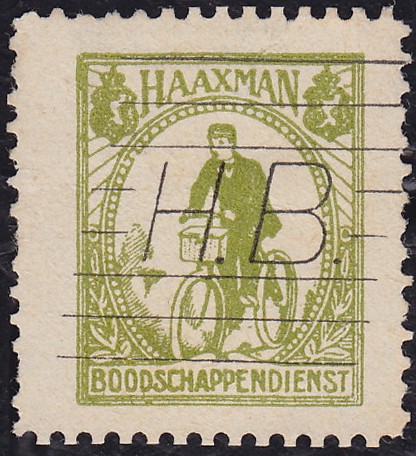HAAXMAN BOODSCHAPPENDIENST
Very little is known about this Dutch messenger and shopping service (BOODSCHAPPEN = groceries, DIENST = service):
The company operated in Rotterdam in the years 1909 to 1916 as advertisements in different newspapers like Rotterdamsch-Nieuwsblad, De-Maasbode, ... show. They started in September 1909 with the following advertisement searching “twenty big (14 to 16 years old), well-educated boys, from a neat environment, in possession of a good-running watch and excellent cycling skills”.
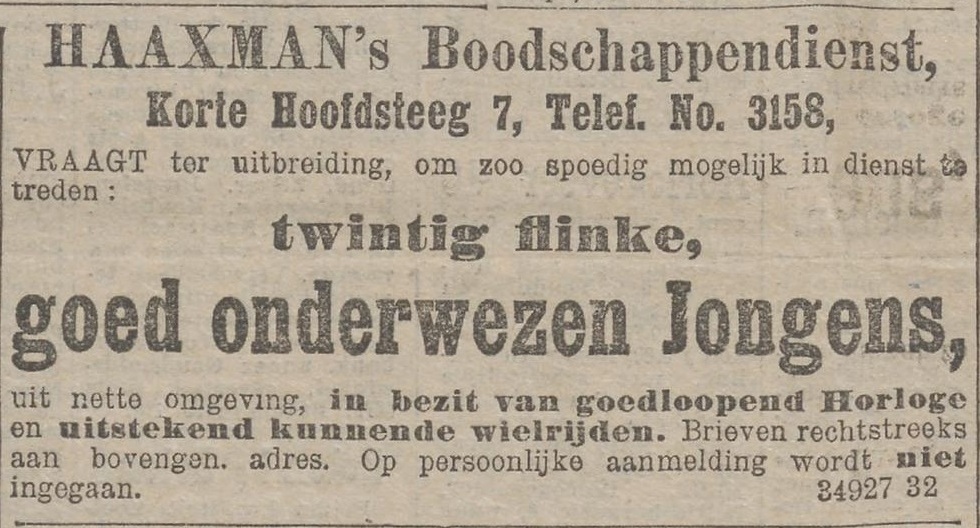
One of the main businesses was the delivery of circulars and messages (BOODSCHAP = message):

“Clearance. The Haaxmannetjes are real bosses in the delivery of Circulars. Just ask the largest companies.” This advertisement was published in June 1911 (De Maasbode). Note the interesting construction of the cargo bike:
Mannetjes is the diminutive of men - probably an allusion to the very young employees.

Photo: Collection Rotterdam City Archives, dated: 1918-1922 – showing 25 messengers with their bicycles (and Mrs. Haaxman?).
Haaxmannetjes ran all kinds of errands as this little story tells:

"He had to have 10 cents of that.
A boy was sent by his boss to a drugstore to get naphthalene for 10 cents. The boy promised to do his job well and kept repeating the word "naphthalene, naphthalene!" Then it happened that two Haaxmannetjes collided with each other on their bicycles and our shopping guy had lost his nice word of shock.
When he was standing at the chemist's store, he couldn't remember his message. "Do you have a Bible for me?" Asked the boy. The chemist fetched a Bible from behind. "Now read to me the Sons of Jacob?" And the shopkeeper patiently read: «Ruben, Levi, Zabulon, Gad, Naphtalie…. »
Stop! ”The boy now shouted joyfully. Naphthalene! I must have 10 cents of that. »"
The Haaxmannetjes build their own bicycles and even sold them:
"In stock: Men's bicycle: double brake, all accessories, very strong f 36; Lady's bicycle, ditto, ditto f 41; Can also be visited on Sundays: Haaxman’s Cigar Warehouse, Korte Hoofdsteeg 7"
During the war other tasks came up to the messengers as the advertisement from November 1911 shows:

“During the war Rotterdam is guarded by Haaxmannetjes. Barracks as follows:
Staff: Korte Hoofsteeg 7
One regiment: Middensteiger
Two Sections: Avenue Concordia
Two Sections: Binnenweg
In case of alarm phone …. “
+ + + + + + + + + + + + + + + + + + + + +
The stamp is olive-green, perforated 11.5 and cancelled “H.B.” - most likely Haaxman Boodschappendienst. The coat of arms in the upper corners might be based on the „Grote Rijkswapen“ used from 1815-1907?
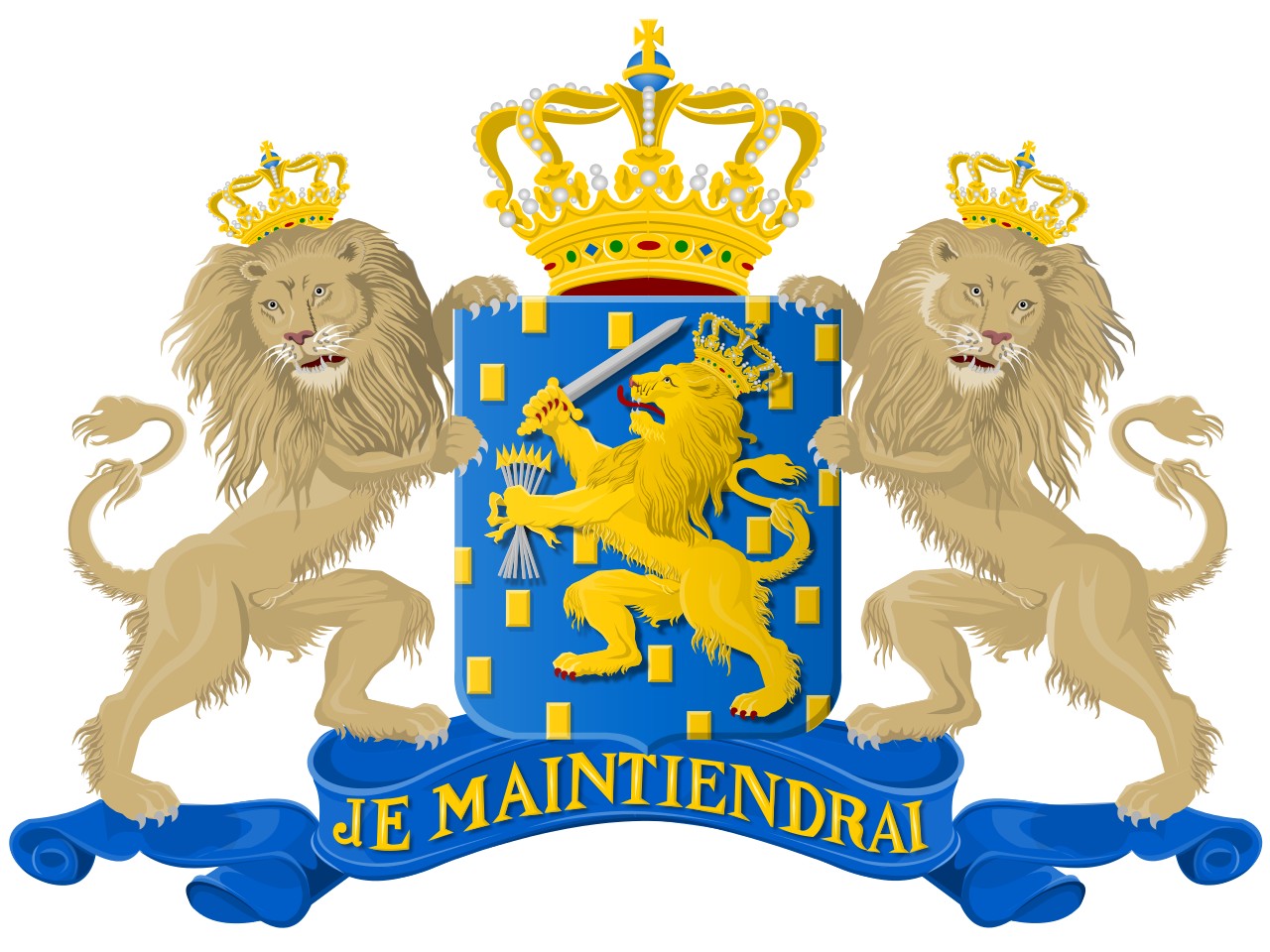
The question is: what was the stamp used for? The circulars/mass mailings were probably not franked with this stamp. But if yes – it would explain that only very few (two?) exemplars are known.
The stamp has no face value. In 1909 the rates were as follows.
f 0.05 per message
f 0.05 additionally per half hour
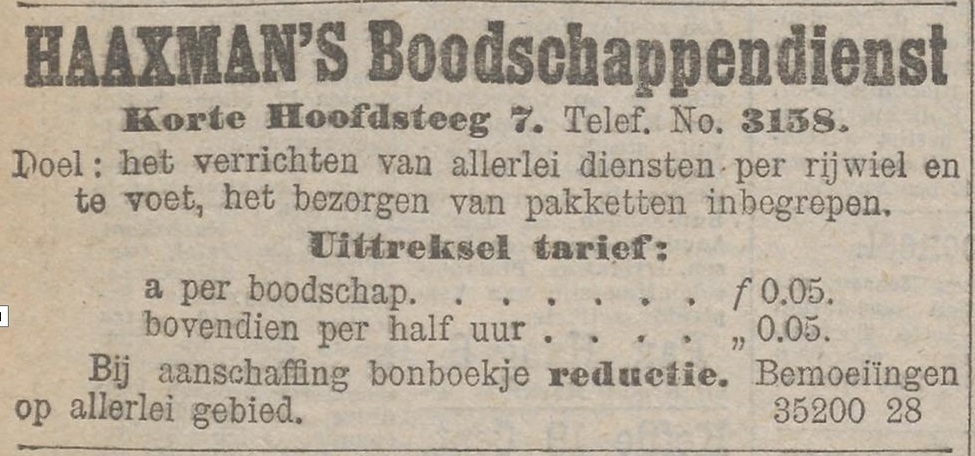
This compound price varies and would explain the missing face value. Another advantage is that in case of a change in price no new stamps had to be printed.
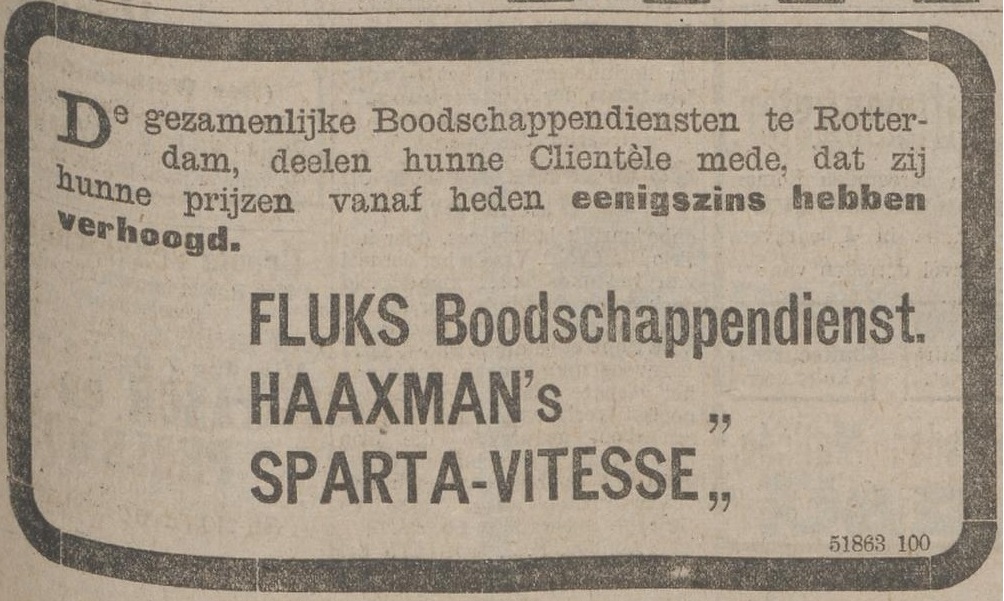
"The joint messenger services Rotterdam inform their clients that they have slightly increased their prices from today (1915.12.08) on. Fluks, Haaxman’s, Sparta-Vitesse Boodschappendienste"
If you know more about this stamp, please contact This email address is being protected from spambots. You need JavaScript enabled to view it.
References/External links:
- ATALAYA Cinderella Magazine (whole no.: 20, page no. 10) - scroll down to Belgium: parcels company by Christer Brunström
- Bathos Checklist
- Rotterdam Wapen (Wikipedia)
- "Van een Auto en nog wat“ Report of an accident published in De Maasbode on the Saturday 28th September 1912
- Compilation of Haaxman advertisements - click on the picture to see the gallery:

